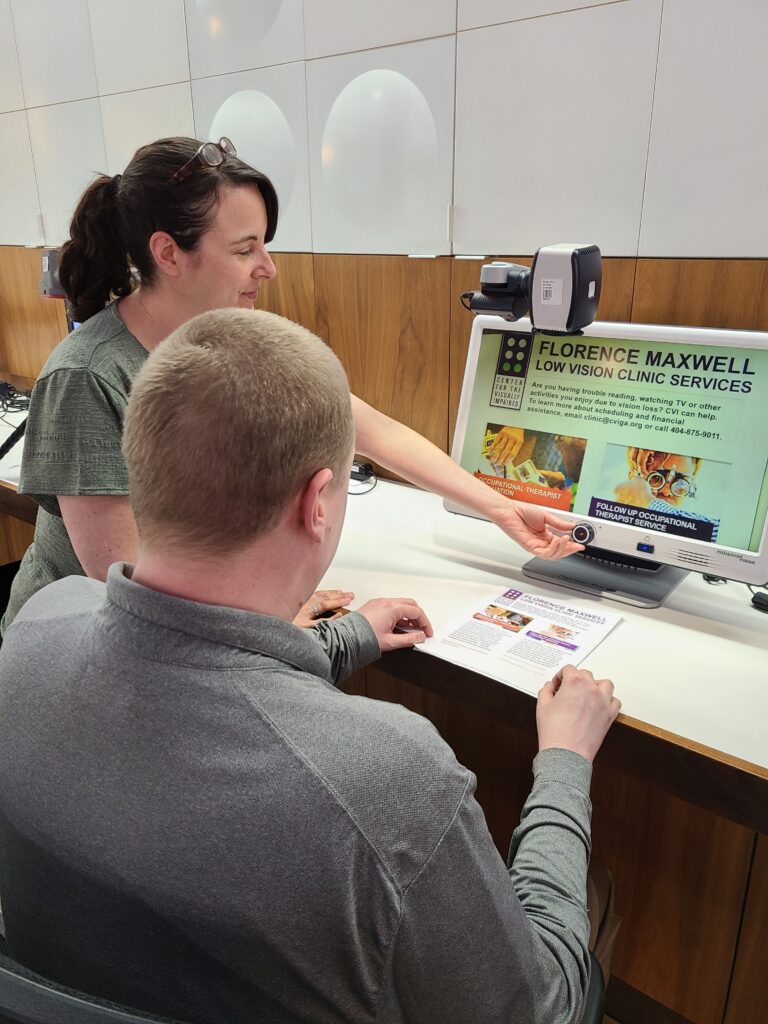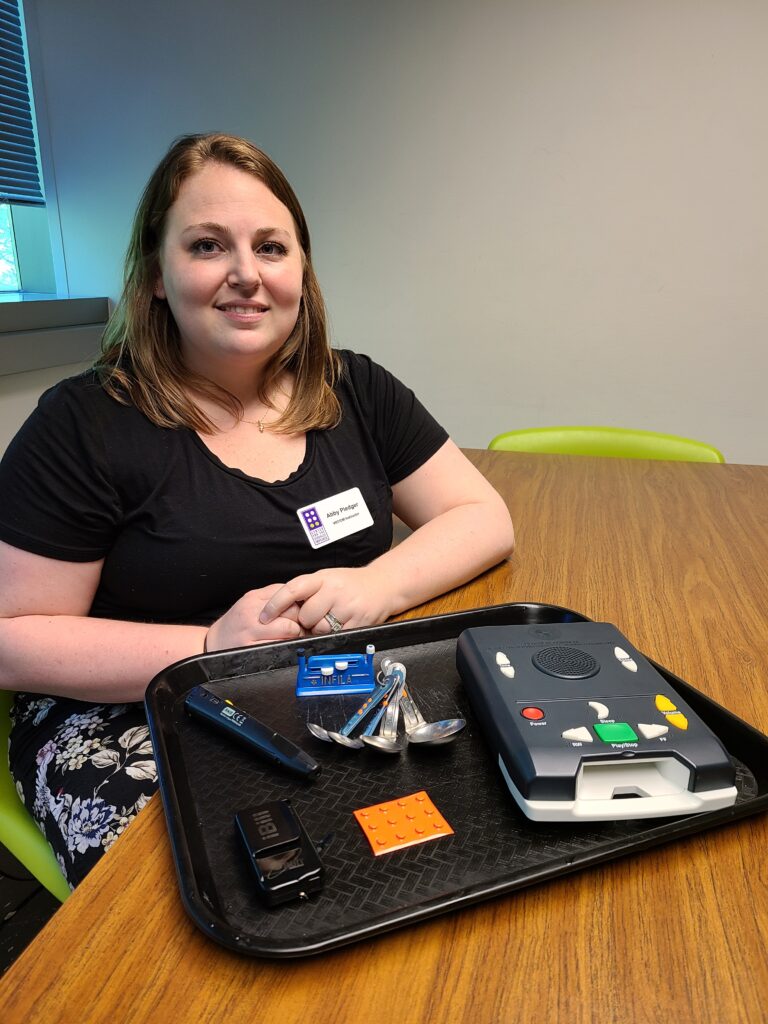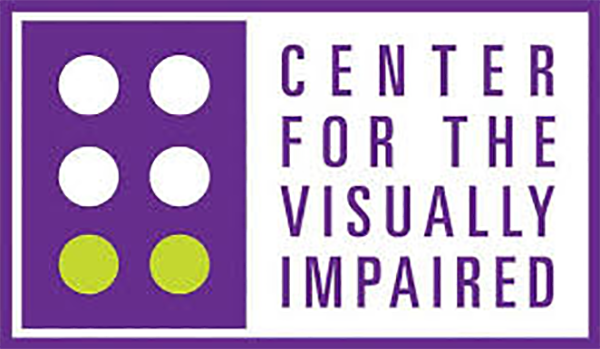Here at CVI, we’re fortunate to have a diverse team of professionals who each play a unique role in assisting people living with blindness and low vision. For many of our clients, the most impactful help they receive comes from our occupational therapists (OTs) and vision rehabilitation therapists (VRTs).
Some people may not be familiar with what occupational and vision rehabilitation therapists do. These therapists work with people who are disabled, injured, or ill to help them adapt to their condition and learn skills and techniques to improve their quality of life. For the OTs and VRTs at CVI, this means teaching people with vision loss to perform daily tasks and activities in new ways, often with the help of assistive devices and adaptive technologies. They may help clients learn to cook their own meals with adaptive cookware, call an Uber on their smart phone using accessibility features, or organize their home with a PenFriend audio labelling system.

“Our job is to help people be independent, confident, and active, despite their vision loss,” says Ada, one of CVI’s OTs. Ada works with clients who are referred to the Low Vision Clinic by their doctors and are typically at the beginning of their journey with visual impairment. “Some people already have established goals,” Ada tells us, while others may not. “We plant seeds for them and guide them to figure out the goals they may not know they have.”
Clients first meet with Ada after their low vision exam, when she performs her evaluation and an initial treatment session. She then schedules a follow up appointment at CVI or in the client’s home, where she can get a better sense of their abilities and challenges. The purpose of these services, she says, “is to make clients feel confident in what they’re doing, help them advocate for themselves, and reduce their reliance on other people.”

As people adapt to vision loss, they must re-learn everyday tasks while mastering new skills and devices. “You can do everything you did prior to vision loss,” says Abby, a vision rehabilitation therapist who teaches adaptive technology and activities of daily living. “I’m just teaching a different way to do it.” One of Abby’s favorite things to show her patients is how to thread a needle using an automatic needle threader. “Even for someone who has sight, that’s kind of a hard task,” Abby explains. “Clients who like to sew say, ‘There’s no way I can ever sew again.’ When I teach them how to thread their needle for the first time, it’s like their a-ha moment. And that’s why it’s my favorite- their face just lights up!”
The impact that providers like Ada and Abby have on our community is made possible in large part by the generous support of CVI’s donors. “Some devices that would be really beneficial are not cheap. And so, when some people see the price tags they can completely back away from treatment. They may say, ‘What’s the point? I can’t afford it.’” CVI’s supporters, whose giving helps cover the costs of assistive devices and other services, “really are life changing,” Abby says with a smile. “They give our clients hope.”
If you or a loved one are experiencing vision loss, give us a call at 404-875-9011 and make an appointment for a low vision exam today. Our occupational and vision rehabilitation therapists can help you adjust to, or improve, a life with limited or no sight. To learn more about the services available at CVI, click here.

